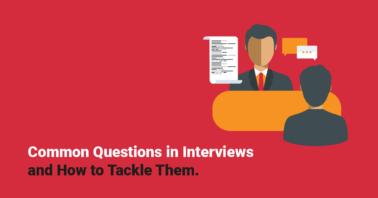Challenging clients; who are they and how to deal with them
In every business, dealing with challenging clients can pose a serious problem if not carefully handled. In the course of doing business, you are bound to face clients with different personalities. Some of them will include difficult clients who can have a positive or negative impact on the brand you are working for; depending on how they are managed.
The issues we seek to address in this article are; how exactly employees that are in regular contact with clients can protect themselves; how they can deal with challenging clients as well as how to take action if they have been attacked by the clients they serve. In the business world, where customers are considered “King”, employees as well as the organisations they work for often remain silent when the customers they serve mistreat them.
Although clients are in most cases the core of the business, employers need to realise that those that serve them are equally key. Furthermore, employees themselves have to draw a line between doing their job to the best of their ability, and being disrespected. They need to realise that they ought to be respected.
The first step to pro is understanding a challenging client and how to deal with them. Here are some of those clients you need to be aware of and how to exactly handle them:
The Rude or Aggressive Client:
Quite often, employees encounter this very common type of challenging client. This kind of client speaks very rudely and seems to despise the people making an effort to serve them. Should you make a mistake on their order or fail to answer their demands correctly, they will quickly shout at you or talk to you in a very offensive way.
How To handle A Rude Client:
In such a case, it is very important to remain calm when you are being insulted. Choosing to return insult or use your emotions to manipulate the client simply makes the situation worse. It is always important to let the client finish complaining regardless of who appears to be wrong or right.
After they have finished complaining and have calmed down, you should then show them that you understand their viewpoint, apologise to them and focus on providing a solution to the issues raised.
The Impatient Client:
This type of client wants the best service but will not be patient enough to wait for it. This client is always in a hurry and thinks he should always be prioritised. An example could be when everyone else is in a queue, he seeks preferential treatment by refusing to join the line.
How To handle An Impatient Client:
Although it is key to serve clients promptly, it is important for every employee to know their limits and stand their ground. If the “first come, first served” basis is being followed, an employee has to stick to that and ensure all clients are treated equally and fairly without any bias. Calmly and politely communicating this to such a client can also help them become more aware of everyone else.
Another solution could be referring the client to another colleague that may not be as occupied to attend to them in a timely manner.
You can also ensure you manage the client’s expectations by telling them from the onset how long a project will take and then follow up with regular progress reports.
The Hands-On Client:
It is okay for a client to try to help you serve them better. However, when the client tries to take complete charge of the task he/she is paying for to the point where you are made to appear incompetent, it might be time to draw the line.
How To handle A Hands-On Client:
Listening attentively to these clients’ demands and ensuring they are met can go a long in helping an employee serve them satisfactorily. Such clients will often follow up on every little detail of the project you are working on and demands that deadlines be met. Giving them the necessary feedback they need and meeting their demands on time presents you as someone they can then depend on to perform their duty and therefore not need to micro-manage.
The Demanding Client:
Demanding clients are those clients that make unreasonable demands that are usually not part of their contract with you. They might often demand additional services or attention that they have not paid for.
How To Handle A Demanding Client:
The key in handling this client is communication. Be sure to politely communicate to them what you are able to do and not to do. If their demands are too unrealistic and place you in an uncomfortable position or are out of your contract, it is best to stand your ground and decline to perform those extra tasks clearly explaining the reasons why.
The Suspicious Client:
This type of client will often question your capacity. They will often seem to always look for fault in every suggestion you could have and reject most of your logical arguments.
How To Handle A Suspicious Client:
The best way to handle such a client is to avoid being pushy as they have a tendency to disregard any explanation you tender in defence. Always remember to back your arguments with viable reasons. Seek to also listen to the client and ask as many questions as you can in order to find out exactly what they want. When you know what the client wants, it is then easier for both of you to find a middle ground.
The Timid Client:
As easy as these clients may appear to be because they are usually not outspoken, they can pose a problem when they fail to express what their expectations are. Such clients often come off as shy and not clear of what exactly they want. Even when they may find your service to them poor, they may not express it but will simply not come back to you. Knowing what they want is the one important step to retaining them.
How To Handle A Timid Client:
In handling this client, patience and being able to create more personal relationships with them is very key. You need to give them time to be able to speak, ask questions where they do not understand and listen to them carefully. Observing body language from them as well can be helpful.
The Friendly Client:
Almost every employee would wish to encounter the friendly client, due to their accommodating and amiable nature. However, when it is to the extreme it could come at the cost of your job. For example having a client that is too chatty can be very distractive and wastes productive hours that could be used to serve other clients as well.
How To Handle an Overly Friendly Client:
To handle this client, you will have to maintain a nice and polite interaction, occasionally contributing to their conversation. You, however, have to make sure they take control of the conversation by using short answers as well as keeping some professional distance from the client. Should the conversation take too long, you can politely let the client know that perhaps they have to serve other clients as well.
The Smart Client:
This type of client seemingly knows everything and will often criticise everything you suggest. These types of clients think they are superior to you and therefore know a lot more that you do.
How To Handle A Smart Client:
Seek to understand this client and remain positive and calm. Avoid becoming aggressive to them and always show them that you are empathetic and understand their concerns. Follow through with their suggestions and politely advise, with viable reasons, if you think they are going wrong. Should you make a mistake, letting this client know in time and in a calm manner is key in maintaining the relationship.
The Complaining Client:
A client can complain about a service or product with viable reasons and that is okay. However, when a client complains about everything no matter how much you try to improve the service is, can be very frustrating to any employee.
How To Handle A Complaining Client:
The best way to deal with this client is to always apologise for whatever they complain about. Do not try to get defensive as they will often not listen. Listen to their demands and try as much as you can to meet them. If they still continue to complain, then refer them to a superior person. Sometimes such clients yearn for special treatment and referring them to your manager or supervisor could just be what they need to calm down.
How to Effectively Communicate with these different Challenging Clients:
Even with the knowledge of they type of client you are dealing with and the recommended ways to handle them, the key to being successful when handling them is, communication. Here are some general effective communication tips that could guide you:
- Seek to understand the client, their paint pain points and point of view.
- Be flexible in the way you communicate. Try to adapt your communication style to the one the client is using.
- Listen to what they have to say. Even when they may seem rude, allow them to vent their emotions and reply calmly after they finish.
- Be direct in your communication clearly stating why the client cannot receive the service they want to at that time. Being direct also entails letting the client know when they have crossed the line.
- Be polite; even when you may be displeased with what a client is doing and you have to let them know directly, remember to be polite and respectful.
- Do not jump to conclusions about what a client says. Seek to understand what exactly they mean and why they have expressed themselves that way.
- Do not be too emotional; keep your emotions in check when dealing with a difficult client. Try not to speak to them rudely or lose control of yourself.
Here is a step by step process that offers further guidance on effective communication with whatever type of challenging client you may encounter:
Step 1. Change your mindset:
The moment you realise that your client is complaining or angry about a service, change your mindset into a customer service mindset whether or not you hold a customer service role. Put yourself in the client’s shoes, seek to understand them and to solve their grievances.
Step 2. Listen attentively:
Understanding the client’s position allows you to actively listen to their grievances. Even when the client may not actively or clearly voice out their opinions, probe them with questions that will motivate them to give you as much information as they can about what they may not be pleased about. This gives you the information you need to help solve the situation or know how to best handle them.
Step 3. Repeat their grievances:
After the client has voiced their grievances, go ahead and repeat them just to be sure that those are the exact issues you have to deal with. Should you not be sure, go ahead and ask them more questions to understand their issues.
Repeating the client’s grievances further gives them the impression that you care and are concerned about them. This makes it easier for you to relate to them and build a better relationship with them.
Step 4. Apologize:
Now that you know what could have upset the client, go ahead and show them that you truly understand why they are upset and apologize.
Step 5. Suggest a solution:
By this time, the client will be more ready to listen to what you have to say since they have had the time to voice out their grievances. At this point is when you go ahead and suggest a solution that could help them.
Should the client reject the solution, ask them what they think would solve their issue and work towards that.
Step 6. Implement the solution and follow up:
Go ahead and ensure the solution agreed to is implemented and follow up whether the client is happier or there is anything more that can be done to make them happier.
Step 7. Learn from every situation:
Always remember to pick a lesson from every situation you encounter. This helps you to understand how to handle similar challenging clients as well as how to avoid similar situations.
When the Situation is Beyond Recovery;
Employees are often expected by their employers to efficiently serve all the various types of clients they are faced with. However, if an employee has done all they can as far as dealing with a challenging client, terminating their relationship with them could be the most logical and beneficial thing to do both for their job as well as a company. So when should this be the solution?
- When the client takes more productive time than their worth or than they actually pay for.
- When the client makes extreme demands that are beyond your contract.
- Your relationship and communication with the client is not improving no matter how much you try.
- The client does not pay for your services and seems to take you for granted.
- They do not respect you and are physically or emotionally abusive.
- The client keeps changing their mind and does not seem to arrive at a final decision.
- The client blames you when things go wrong even after you provided sound advice.
When you have been violated by a client:
Many employees do not know what to do or how to go about things when a client physically or verbally violates them. Although employers have a right to protect their employees’ rights, many times employees themselves have to be proactive. Supposing you happen to be caught up in such a situation, here’s how labour laws generally suggest you go about the issue:
- Report the issue to your supervisor or manager or Human Resource personnel.
- Using the Human Resource Manual, the issue should be able to be resolved and if at all your rights were indeed violated, you should demand compensation.
- Should the organisation you are working for fail to fairly represent your case, seeking help from a Worker’s or Trade Union should be the next step.
- Where the issue is still not solved amicably, it can then be taken to the courts of law. Various labour laws provide for workers’ protection as well as compensation each time workers are violated. Employees need to further understand these laws and be aware that they have a right to be treated respectfully.
No matter how much money you are paid or how desperate you are for a job, you should always remember that you are a human being that ought to be respected. Knowing how to handle challenging clients as well as knowing when they have gone overboard helps you to exercise your right to protect yourself. Do not be a victim of unfair treatment from clients at work; if you are, it is well within your right to seek help.





